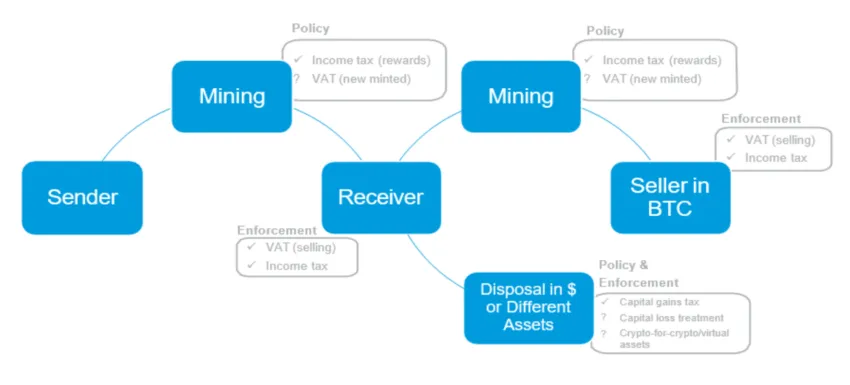In the blockchain industry, a looming notion persists that American regulators might attempt to “kill crypto” or stifle this innovative sector’s growth. This concern was further amplified by the Biden administration’s controversial proposal for a hefty tax on Bitcoin and crypto miners.
Contrary to popular belief, the legal environment shaping the future of crypto is far from a death sentence. Instead, it signifies a complex dance between innovation and compliance
Hefty Taxes May Kill Crypto Innovation
With election year dynamics slowing legislative progress, the industry is left yearning for bills that could provide a clear direction. Although industry leaders remain optimistic about the future, stressing the importance of blockchain companies preparing to comply with eventual laws, the Biden administration aims to introduce a tax targeting Bitcoin and crypto miners.
This move has sparked widespread concern among industry investors, fearing it could cripple the growing sector. The US Treasury Department’s 2025 revenue proposal outlines a 30% tax on the electricity costs incurred by crypto miners. This is a move that could have seismic implications for the industry.
“Any firm using computing resources, whether owned by the firm or leased from others, to mine digital assets would be subject to an excise tax equal to 30% of the costs of electricity used in digital asset mining,” the US Treasury Department wrote.
Read more: How to Reduce Your Crypto Tax Liability: A Comprehensive Guide

This tax, dubbed the digital asset mining energy tax (DAME), is seen by many as a death knell for crypto mining. Critics argue that such a tax would stifle innovation and force mining operations to relocate. This is a similar scenario to the exodus witnessed in China in 2021.
Therefore, the United States could see its dominance wane as miners seek more hospitable environments.
“A proposed 30% punitive tax on digital asset mining would destroy any foothold the industry has in America,” US Senator Cynthia Lummis said.
As the debate continues, the broader implications for the US economy and its position in the crypto market remain uncertain. The Biden administration’s proposal signals a cautious approach to the crypto industry. With Bitcoin and crypto valuations experiencing a resurgence, this regulatory conundrum reflects a pivotal moment for the blockchain industry.
Still, Joshua Kershner, General Counsel at Helium Foundation, told BeInCrypto that the industry’s future does not hinge on the operational intricacies of centralized platforms. Instead, it relies on the development of blockchain applications with tangible, value-adding use cases.
Adhering to Crypto Regulatory Guides
Despite the legal scrutiny on centralized entities, other projects extending beyond token trading or mining seem undeterred, pointing to a broader, more resilient blockchain ecosystem.
“The blockchain industry is far more interesting than just Binance and Coinbase and other centralized exchanges. While they play an important role in the ecosystem, the future of the industry will be defined not by trading tokens, but by real use cases that create value,” Kershner said.
The focus of regulatory actions, such as the CFTC’s settlement with Binance, on specific malpractices highlights that not all facets of the blockchain sector are under siege. According to Kershner, it is a reminder of the necessity for crypto companies to adhere to stringent regulatory requirements. These include sanctions compliance, anti-money laundering measures, and KYC protocols.
Kershner emphasized the distinct nature of blockchain projects, particularly their immutable characteristics, which demand a compliance-first approach from inception. Unlike Web2 entities that may retrofit legal frameworks post-launch, blockchain initiatives require integral compliance foresight, reflecting the sector’s unique regulatory challenges.
“With Web3, it is critical to have experienced in-house counsel early on working with the engineering and product teams to ensure that products are built with compliance in mind before they are released with immutable features. It is much harder to put regulatory band-aids on a blockchain project than for a typical Web2 company,” Kershner added.
Moreover, the pervasiveness of insider trading within Web3 mirrors traditional industries, affirming the universality of legal standards across technological paradigms. This points to a broader need for legislative clarity and adaptability to accommodate the distinct attributes of blockchain technology.
Kershner advised the new companies entering the crypto market to “lawyer up” in light of the current regulatory environment.
“The need for innovation and growth is not in conflict with regulatory compliance and investor protection. The issue facing the industry is that regulatory uncertainty makes compliance difficult or impossible, especially on a global scale. Hire in-house counsel early to provide strategic advice as you build. Acknowledge that the industry is still new and that things will change rapidly over the next few years,” Kershner concluded.
Read more: Crypto Regulation: What Are the Benefits and Drawbacks?
Ultimately, the drive for regulatory clarity and the necessity of compliance reflect a shared vision for a future where blockchain technology can flourish responsibly and innovatively within a supportive legal framework. The question is not whether American regulators are trying to kill crypto but how they, alongside industry stakeholders, can collaboratively nurture its growth and integration into the fabric of global finance and technology.
Trusted
Disclaimer
Following the Trust Project guidelines, this feature article presents opinions and perspectives from industry experts or individuals. BeInCrypto is dedicated to transparent reporting, but the views expressed in this article do not necessarily reflect those of BeInCrypto or its staff. Readers should verify information independently and consult with a professional before making decisions based on this content. Please note that our Terms and Conditions, Privacy Policy, and Disclaimers have been updated.

